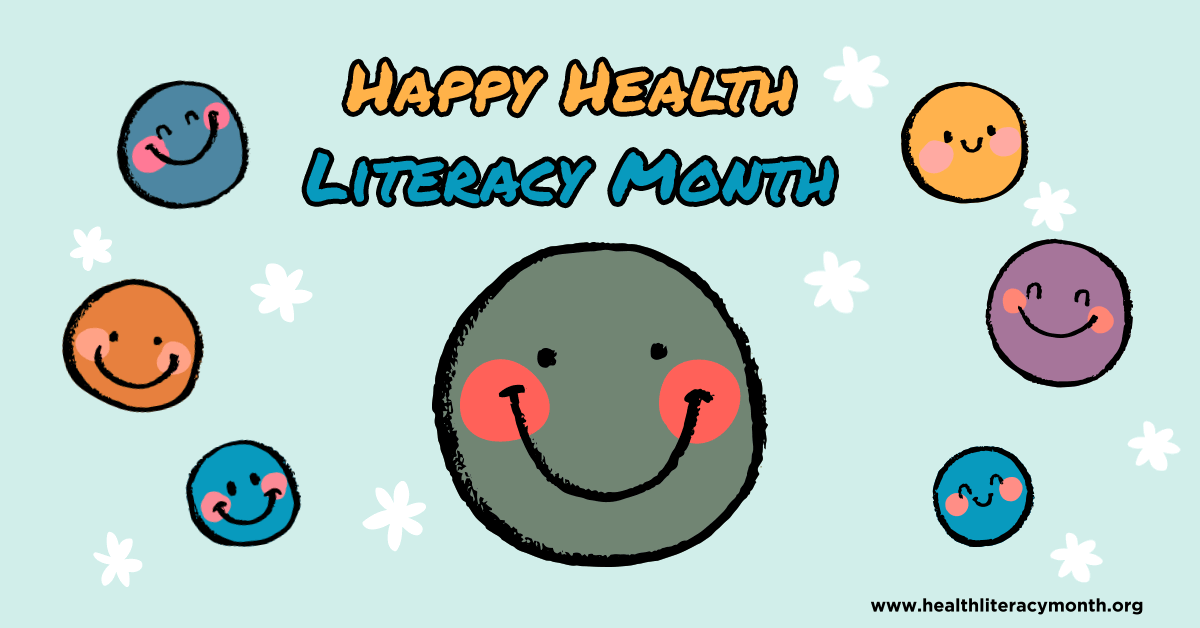Taking care of our own health and that of our family is an ongoing part of everyday life, not just when we visit a doctor or hospital. Increasing our health literacy can help us protect our health, prevent health problems, and manage health problems whether those arise suddenly or are chronic conditions.
Health literacy means how well a person can find, understand, and use information and services to make decisions about their own health and the health of others in their care. Organizations contribute to health literacy in how well they enable all people to access information and services; if the information an organization or provider shares is hard to use, it creates a barrier to health literacy.
Better health literacy leads to better communication between health care provider and patient, better patient outcomes and satisfaction, and more efficient use of healthcare services. Anyone can struggle with health information such as instructions for care or determining the right amount of medication to give a sick child, how to follow preventive health guidelines or respond to a public health warning. Having an adequate level of health literacy makes it easier and less stressful for patients and caregivers to have conversations about hard topics and during potentially stressful medical situations. Poor health literacy can result in serious medication mistakes, reduced ability to manage chronic health problems, increased hospitalizations, worse health outcomes for patients, and contributes to higher healthcare costs.
There are some ways individuals can improve their own health literacy:
- When speaking with a healthcare provider or pharmacist, don’t be intimidated to ask questions, and make sure you understand the answer.
- Ask for information in plain language, ask that medical terms be defined or described clearly.
- Repeat instructions back to your provider using your own words, because that gives you both a chance to make sure you are clear in your own mind and not just regurgitating information that you don’t really understand.
- Bring someone to appointments with you – sometimes another person will have a different question or be able to help remember details that might have been missed in the provider’s office.
There is a lot of health information constantly coming at us from a variety of sources, with recommendations to use certain products and services or try a different method of managing our health. By improving our personal health literacy, we are better able to find trustworthy information that can have a significant impact on our current and ongoing health.
Providers and organizations can also promote health literacy. From the Institute for Healthcare Advancement, the sponsor of Health Literacy Month, here are some ways:
- Improve your cultural competence. This includes being aware of and sensitive to cultural diversity.
- Use teach-back to confirm understanding. Just because something is clear to you, it doesn’t mean it’s clear to your listeners. Teach-back has 3 steps: 1) Explain the health information; 2) check for understanding; and 3) re-explain the health information if needed.
- Use plain language for spoken and written communication. This includes using familiar words and short sentences, and providing simple, clear explanations for unfamiliar terms.
- Ensure that written materials are easy for the intended audience to find, understand, and use. This includes making sure the materials are appropriate for the audience’s language, culture, and reading level.
- Use an interpreter if needed. An interpreter converts a spoken or signed message from one language to another.
Community Health Workers (CHWs) play an important role in promoting health literacy. CHWs are often from the communities they serve and can bridge gaps in health literacy between a provider and a patient. They can interpret what a provider or organization is recommending not just in terms of language, but also by creating trust, which improves patient health outcomes and increases healthcare efficiency.
Health insurance is another area of health literacy that can cause anxiety. Plans change, definitions can be murky, and it can be confusing to know what types of providers, procedures, or prescriptions will be covered and how much you will have to pay. The members of the NCHD Equity and Outreach team are certified Assisters with Connect for Health Colorado, the state health insurance marketplace. Open enrollment starts on November 1 and they will have information about which health insurance companies are providing coverage in our six-county district, and be able to help you enroll in a plan that will meet the needs of your family regardless of documentation. They can also help you determine if you qualify for Medicaid or CHP+ and help with enrollment in those at any time of the year. Please visit nchd.org/programs/equity-and-outreach/ to learn more about the resources and services our Equity and Outreach division provides.
Limited health literacy costs the healthcare system money and results in unnecessary disease and death. Improving health literacy ensures patients and families can receive and understand health information that allows them to be advocates for their own care, take advantage of preventative screenings, manage chronic conditions, and improve health outcomes. If you are interested in ways you can improve your own health literacy – as an individual or organization – take a look at some of the following resources.





